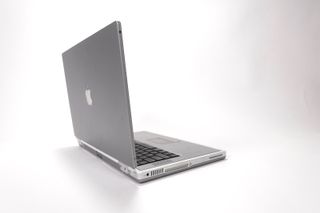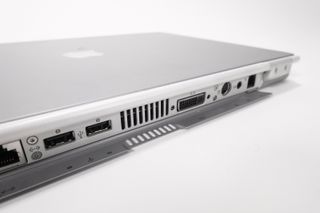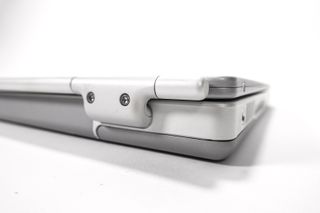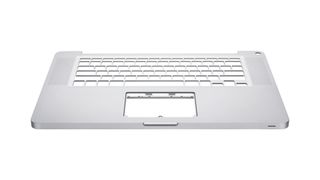Titanium PowerBook G4: The Power and The Sex

Since their inception, Apple's PowerBooks had been encased in various shades of gray and black plastics. Some were smaller than others, and they looked good for the time, but by the time 2001 rolled around, it was time for a change.
The iMac and iBook G3s were colorful machines, and even the PowerMac was clad in plastic. The PowerBook G4, however, would be a totally different beast.

This is my Titanium PowerBook. There are many like it, but this one is mine.
Jobs' pitch for the machine was simple. Apple's notebooks were powerful already, but subnotebooks like the 11-inch machines Sony was selling at the time were far more attractive.
This language even made it into the press release:
"The all new Titanium PowerBook G4 is the most revolutionary portable computer ever created," said Steve Jobs, Apple's CEO. "Its a 'supercomputer to go' in terms of performance, yet it's thinner and sexier than the best subnotebooks."
On the Inside
On the power front, the new notebook came with the G4 processor, which was notably faster than the previously-used G3. For some tasks, Apple claimed it was 60% faster, in fact. Each of the two initial SKUs came with slot-loading DVD-ROM drives, 2 FireWire ports (hidden behind a door in the back with the rest of the I/O) and were Airport-ready.

While the launch models were clocked at 400 and 500 MHz, Apple would revise these machines several times over their two and a half year run, vastly increasing the power that mobile users were growing accustomed to having.
Master your iPhone in minutes
iMore offers spot-on advice and guidance from our team of experts, with decades of Apple device experience to lean on. Learn more with iMore!
Gigabit Ethernet was added in October 2001, with an increase in clock speed. In April 2002, the machines got faster again and a DVI port and audio in were added.
The last revision, in November 2002, brought an optional SuperDrive, which was the first slot-loading DVD burner offered from Apple. These machines ran at a clock speed of up to 1GHz and supported 1 GB of RAM.
On the Outside
The big story was, of course, the design.
The G4 was just one inch thick, and was made out of metal. It made the previous-generation machines look bloated and old, in their curvy black plastic enclosures. Instead of the aluminum used today, Jony Ive and company opted for "airplane-grade" titanium. Most of the machine was covered in the lightweight metal, giving the computer a sleek, modern look. Trim pieces were painted white, as were the hinges.

Trouble in Paradise
Unfortunately, as it is with most things, the Titanium PowerBook wasn't quite perfect. Unlike the anodized metal Apple uses today, there was paint applied to the PowerBook that would chip off over time. This left the notebook looking beat up and old.
The biggest problem with the design would prove to be the hinges. Many, many users would open their notebooks just to have the lid come off in their hands as the hinges would fail suddenly and completely. In later PowerBook and the MacBook Pros, Apple would use one very wide hinge to help spread the load over a larger area to solve this.
(Thankfully, my Titanium hasn't suffered either of these fates, as you can see.)
The Titanium's Legacy

The Retina MacBook Pro I am typing on right now can draw its family tree right back to the Titanium PowerBook.
Some of the similarities are obvious. Both are powerful, thin and clad in smooth, cool metal. Both have black key caps and nice trackpads coupled with beautiful displays.
But under the hood, these machines are even more similar.
In 2008, Jobs and Ive introduced the unibody MacBook Pro. In short, Apple starts with a slab of aluminum, carves it up and puts the logic board and other components of the computer into it. The bottom cover is just a thin piece of metal to cover it up; all the structure is formed by the top case.

While it wasn't as elegant or simple as this, the Titanium used a similar design. All of the guts of the machine came out through the bottom, making the notebook a weird, accidental proof of concept.
This sort of things is only noticeable in hindsight, of course, but that's what this column is all about. For me, as nice as this machine is, it's important to me personally because it was the first Mac I considered "mine." It was assigned to me at a job, but we were encouraged to use them as personal machines as well. I did my first creative work on a Titanium, and will always remember it fondly.
Stephen Hackett is the co-founder of the Relay FM podcast network. He's written about Apple for seven years at 512 Pixels, and has more vintage Macs than family members living in his Memphis, TN home.
Most Popular



